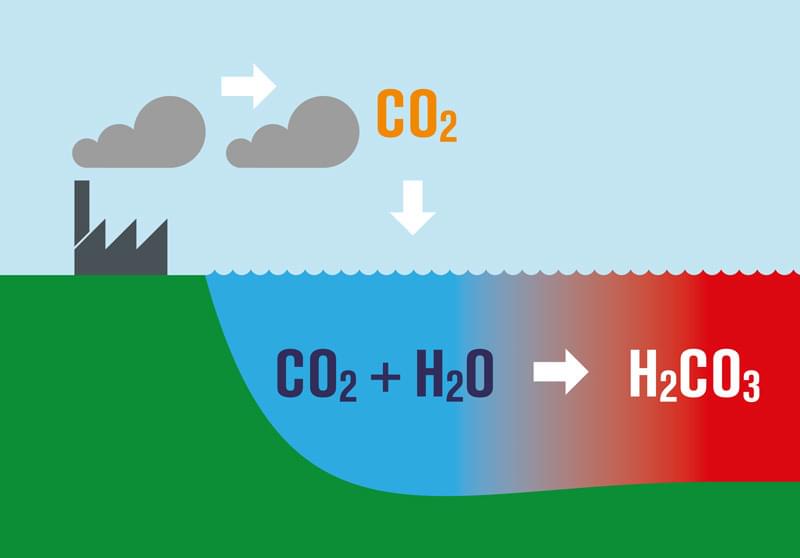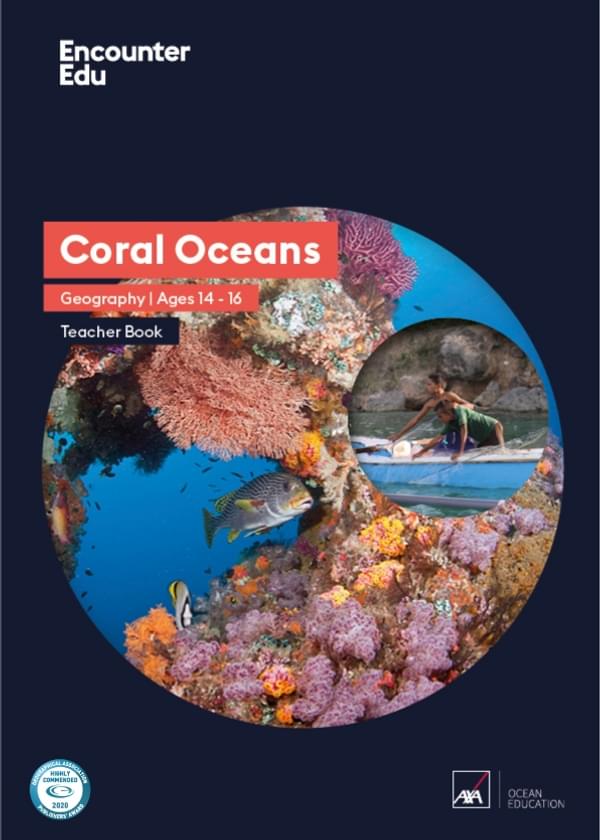Will coral reefs survive this century?
Increased atmospheric carbon dioxide has two impacts on coral ecosystems. Climate change caused by increased greenhouse gases including carbon dioxide contributes to ocean warming. Over 25% of the carbon dioxide emitted through human activity is absorbed into the ocean, undergoing a chemical reaction that changes the pH of the sea. This process is known as ocean acidification.
Warming oceans
Coral reef species live within a relatively small temperature margin. Although they are found through a sea temperature range of 18°C to 36°C, most are found in waters at about 26°C to 27°C.
In each location that coral reefs are found, corals have adapted to the 'normal' temperature in that area and any dramatic and sudden changes in sea temperature can cause acute stress to coral polyps.
This stress affects the nutrient exchange between the polyps and zooxanthellae (or 'zoox' for short), the tiny algae that live within the coral polyps' tissue and supply it with energy.
In the worst cases, this can lead to the zooxanthellae leaving the polyps. As the 'zoox' are responsible for giving the coral their colour, when they leave the coral becomes white. This process is known as 'coral bleaching'.
This bleaching can in turn lead to coral mortality as the 'zoox' provide between 70% and 90% of the energy for the coral polyps.
Coral bleaching occurs when the sea temperature rises by ~2°C, and this change is sustained for a period of 4-6 weeks.
This level of temperature change has become more frequent on the Great Barrier Reef and is associated with El Niño events. Particularly severe episodes occurred in 1998 and 2002 with over 50% of coral reefs on the Great Barrier Reef bleached to some extent in 2002. A mass bleaching event in 2016 affected 93% of the Great Barrier Reef with an estimated 29% of shallow-water coral lost across the Great Barrier Reef Marine Park .
Scientists are investigating the relationship between the current trends in climate change, El Niño events and the rate at which corals can adapt to temperature change to see what fate lies ahead for the world's coral reefs in the coming decades.
Ocean acidification
 Encounter Edu
Encounter Edu
Ocean acidification is the process by which atmospheric carbon dioxide is dissolved in the oceans and through a chemical process becomes carbonic acid. This lowers the pH of the oceans, giving it the name 'ocean acidification'.
One of the problems associated with ocean acidification is that it affects the balance of carbonate ions in the oceans. These ions are the chemical building blocks used by a number of organisms to create shells and structures, including corals, which use carbonate ions to make their amazing structures.
The current problem that ocean acidification poses to hard corals and other organisms is that it makes life more difficult to make their carbonate structures. If more energy is being used to create these structures, then less is being used for other processes like reproduction and growth. Polyps may also become more susceptible to other threats such as disease.

Science | Ages 11-14
Coral Oceans
These resources for ages 11-14 are based on the journeys undertaken by science teams taking part in the XL Catlin Seaview Survey expeditions. Starting with the Great Barrier Reef in 2012, these expeditions seek to create a baseline survey of the world's reefs as well as more in-depth research on the deep reef lying between 30m and 100m.

Science | Ages 14-16
Coral Oceans
This Coral Oceans GCSE Science unit of work challenges students to think about the impact they have on coral reefs as they study their importance, the consequences of threats and how to protect them. The cumulative approach to this unit means students will develop skills throughout to complete a decision-making exercise in the last lesson.
